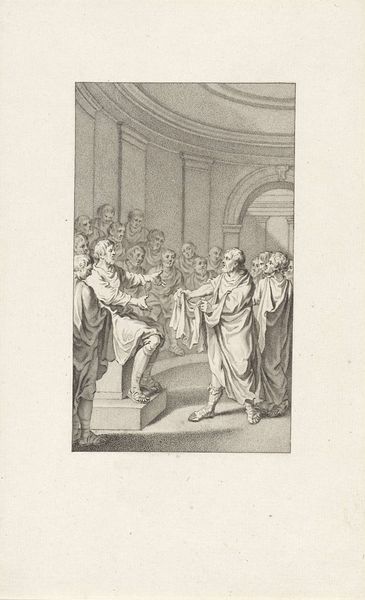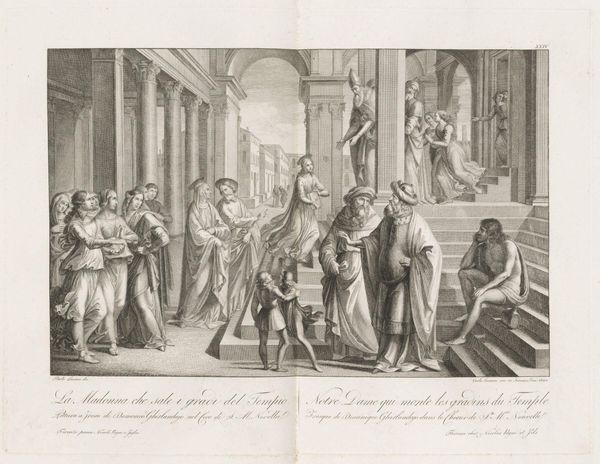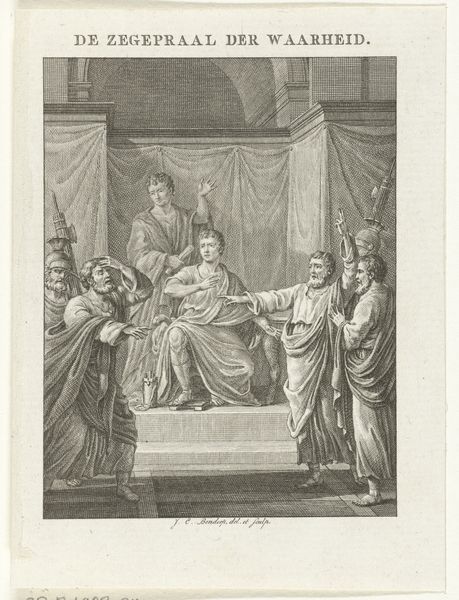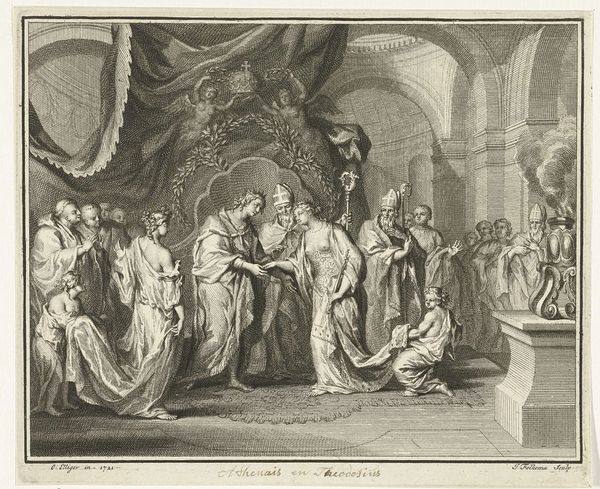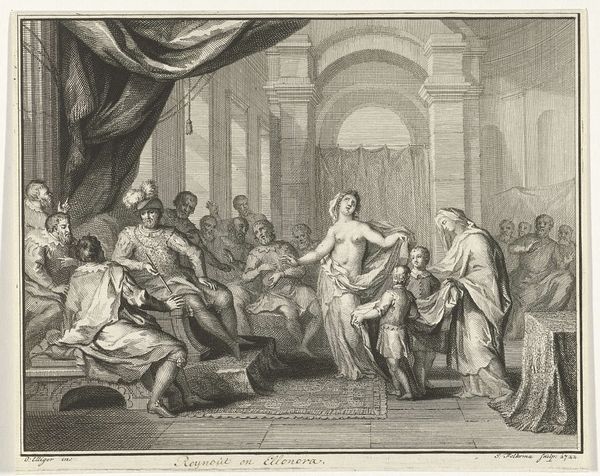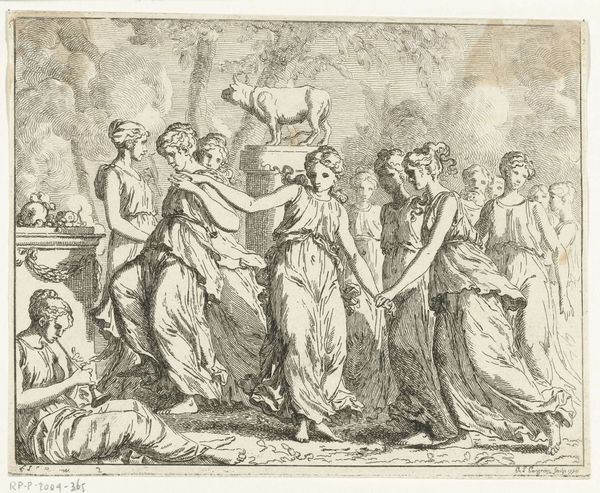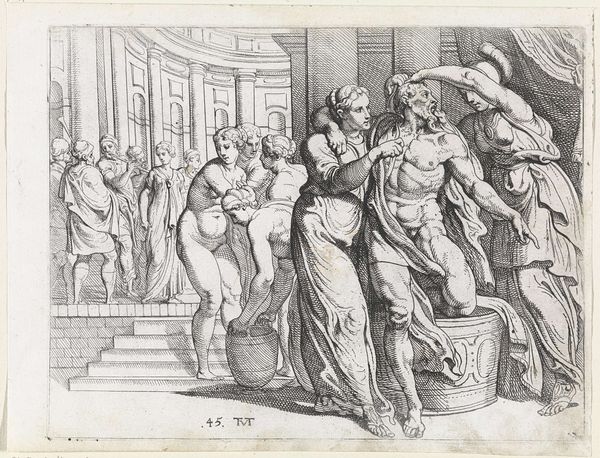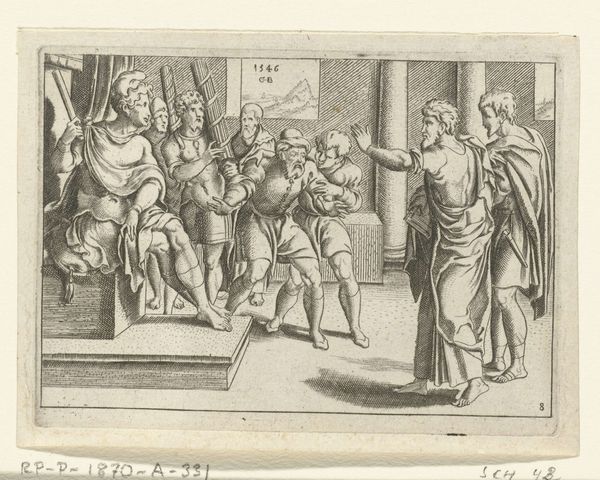
print, engraving
#
narrative-art
#
baroque
# print
#
group-portraits
#
genre-painting
#
history-painting
#
academic-art
#
engraving
Dimensions: height 82 mm, width 170 mm
Copyright: Rijks Museum: Open Domain
Curator: Bernard Picart produced this engraving titled “Bisschoppen van het Concilie van Nicea” or “Bishops of the Council of Nicaea” in 1704. You find it at the Rijksmuseum. What's catching your eye, Editor? Editor: Immediately? The tension! Even though it’s just an engraving, the energy crackles. There's a figure in classical garb pointing dramatically, a shaft of light from above… I feel like I'm watching a really important debate unfold, or maybe even a judgment? Curator: That pointed finger certainly directs our attention. As an image, pointing isn't a neutral gesture, of course. Picart’s use of perspective lines guides the eye, focusing on gesture as a signal and an action, but it simultaneously emphasizes conflict. The viewer has a perspective almost like an active observer within this very moment. Editor: Absolutely, and the surrounding architectural elements make me think this image wants to suggest a play… The theatrical backdrop, the calculated arrangement of figures... Everything about the scene shouts drama, but done tastefully, it doesn’t descend into caricature, does it? Curator: The setting enhances this interpretation of Picart’s symbolic intent. We understand Nicaea now as İznik, Turkey, once the stage for historical debates. As in similar narrative artworks, this composition reminds audiences of a precise cultural memory related to church history and dogmatic theology. The First Council of Nicaea decided on canonical Christian beliefs, represented by the figures on view. Editor: I love that. You’ve decoded it to underscore its profound historical significance. For me, though, the beauty also resides in Picart's technical mastery, and his capacity to evoke something larger than life through subtle graphic details. I can get lost tracing lines and the emotions on display. Curator: It makes us contemplate history through both a personal and monumental lens. How do symbolic records shape and transform culture and religion, not just over time but in the here and now? Editor: Precisely, how are narratives constructed and made accessible to be experienced again and again, and differently, across the centuries. I think I appreciate Picart even more now.
Comments
No comments
Be the first to comment and join the conversation on the ultimate creative platform.



